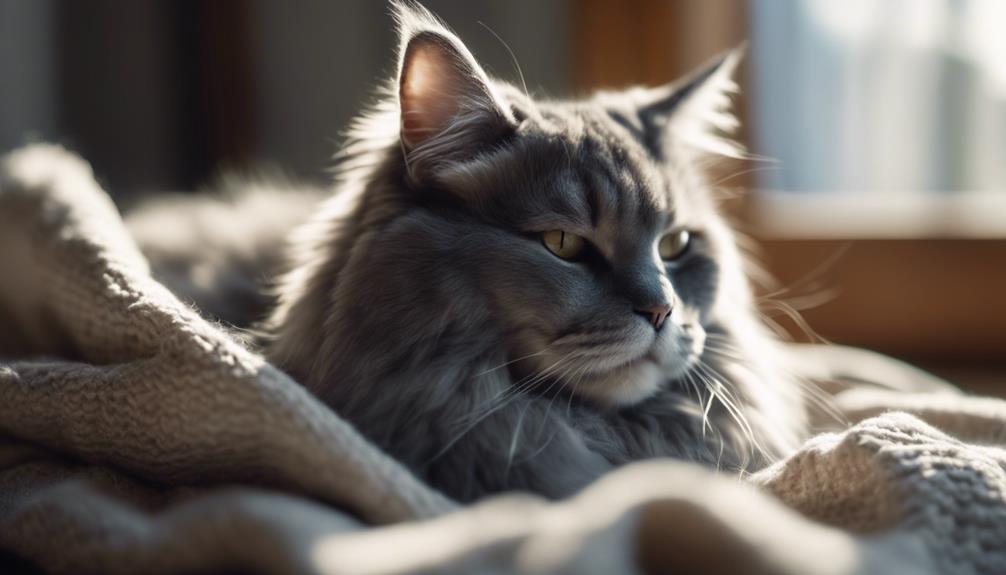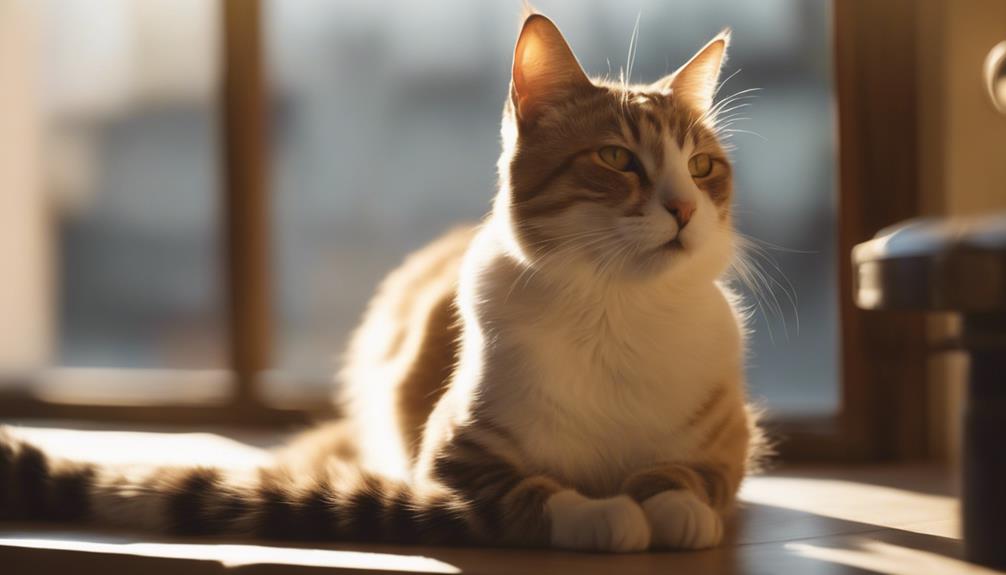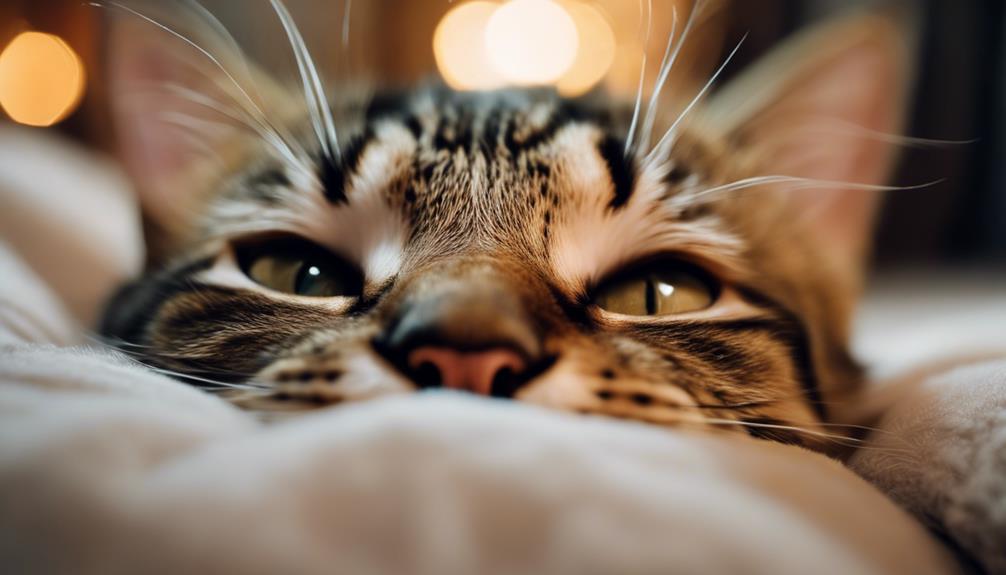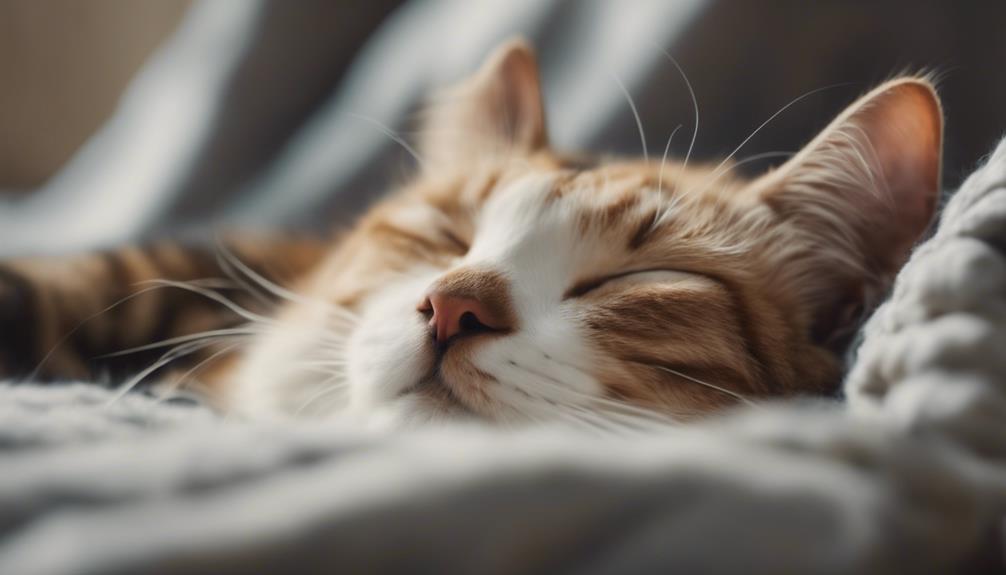In the realm of feline behavior, the reasons behind why cats purr might surprise many. While commonly associated with contentment, the intricacies of this soft sound go beyond simple happiness.
Understanding why cats purr delves into a world where emotions, needs, and connections intertwine through a language that is both subtle and profound.
Exploring the depths of cat purring unravels a captivating narrative of love, communication, and companionship that resonates deeply with those who share their lives with these enigmatic creatures.
Key Takeaways
- Purring signifies a cat's emotional state and need for attention.
- Cats use purring to communicate contentment, distress, or desires.
- Purring may have healing properties and aid in self-recovery.
- Understanding a cat's purring behavior deepens the bond between cat and owner.
The Evolution of Cat Purring
The evolution of cat purring showcases a fascinating adaptation in feline communication and behavior. Purring is believed to have originated from a need for survival in wild cats. It served as a way for mother cats to communicate with their kittens, drawing them close for safety and nourishment.
Over time, this communication method evolved, and domestic cats now use purring not only to bond with their owners but also to express various needs and emotions. This adaptation highlights the versatility of purring as a form of communication that has persisted through generations of cats.
Understanding the evolutionary roots of purring can provide insights into the complex relationship between cats and humans today.
How Cats Use Purring to Communicate
Frequently, cats utilize purring as a means of communication to convey their emotions and needs to their owners. Cats employ purring in various situations to express themselves effectively:
- Seeking Attention: Cats may purr to gain their owner's focus or to request interaction.
- Expressing Contentment: Purring when being petted or snuggled indicates their happiness.
- Signaling Hunger: Some cats purr to communicate their desire for food or treats.
- Seeking Comfort: Cats might purr when they're feeling anxious or stressed, signaling a need for reassurance.
Decoding Cats' Emotional Purring

Cats' emotional purring serves as a multifaceted form of communication, expressing a range of feelings and needs to their owners. When a cat purrs, it can signify various emotional states and desires. Here is a breakdown to help decipher what your feline friend might be trying to convey:
| Emotional State | Meaning |
|---|---|
| Contentment | Showing happiness |
| Seeking Attention | Desiring interaction |
| Hunger | Requesting food |
Understanding these emotional cues can deepen the bond between you and your cat, enhancing the communication and relationship between both of you.
Unveiling the Dark Side of Purring
Exploring the potential drawbacks of purring reveals hidden complexities in feline communication and behavior. While purring is often associated with positive emotions and communication, there are instances where it can signal underlying issues or negative feelings in cats. Here are four facets of the dark side of purring to consider:
- Masking Pain: Cats may purr when they're in pain or discomfort, using this vocalization as a coping mechanism to hide their suffering.
- Fear Response: In some cases, cats might purr when they're fearful or stressed, displaying a contradictory behavior that can be confusing for their caregivers.
- Manipulative Purrs: Cats can use purring manipulatively to get what they want, whether it's attention, food, or comfort.
- Overstimulation: Purring excessively or in certain situations can indicate overstimulation, suggesting the need for a break or calming environment.
Cat Purring and Healing Powers

Unveiling the hidden complexities of feline communication and behavior, the potential healing powers of cat purring are a fascinating subject of study. Cats purr at frequencies that align with those used in fracture and pain treatments, suggesting a possible role in aiding self-healing processes. The vibrations produced during purring have been theorized to assist in muscle growth and wound healing.
This soothing sound may not only benefit the cat itself but also have physiological benefits for its owners. By paying attention to a cat's purring behavior, owners can potentially tap into its healing properties and deepen the bond between them. Understanding the therapeutic aspects of cat purring adds another layer of appreciation for these enigmatic creatures.
Purring Beyond Domestic Cats
Purring isn't exclusive to domestic cats; various wild feline species also exhibit this comforting behavior. Wild cats, like bobcats and cheetahs, engage in purring for similar reasons as domestic cats. These wild felines use purring to communicate with their offspring, signal contentment, and establish social bonds within their groups. Despite the different environments they inhabit, the act of purring remains a common language among various feline species. Understanding the universal nature of purring sheds light on the deep-rooted communication methods shared among felines, both domestic and wild.
- Wild felines, such as bobcats and cheetahs, also use purring for communication.
- Purring among wild cats serves to convey contentment and establish social bonds.
- The act of purring is a universal language among various feline species.
- Purring behavior highlights deep-rooted communication methods shared by domestic and wild cats.
Strengthening the Purring Connection

To deepen the bond between cat owners and their feline companions, paying close attention to the context and tone of purring can provide valuable insights into the cat's emotional state and needs. Understanding the nuances of purring can help decipher whether the cat is content, seeking attention, or possibly distressed. By recognizing these cues, cat owners can respond appropriately, fostering a stronger connection with their pets. Below is a table that highlights key elements to consider when interpreting a cat's purring:
| Purring Context | Tone of Purring | Possible Interpretation |
|---|---|---|
| During Petting | Soft and Continuous | Contentment and Relaxation |
| Near Food Bowl | Short and Excited | Hunger or Anticipation |
| While Cuddling | Gentle and Rhythmic | Affection and Bonding |
| When Alone | Intermittent and Loud | Possible Distress or Loneliness |
The Science Behind Cat Purring
Understanding the physiological mechanisms behind cat purring sheds light on the fascinating science that underpins this common feline behavior.
- Cats produce the purring sound by the rapid contraction and relaxation of the laryngeal muscles.
- Purring occurs both during inhalation and exhalation, creating a continuous sound.
- The brain's neural oscillator sends signals to the voice box muscles, causing them to twitch rhythmically.
- Purring vibrations range between 25 and 150 Hertz, which may have therapeutic effects on bones and tissues.
Differentiating Cat Purring Signals

Differentiating cat purring signals can be achieved by observing subtle variations in tone and context. Cats use different types of purrs to convey various messages, and understanding these distinctions can deepen the bond between cats and their owners. Here is a breakdown of common cat purring signals:
| Signal Type | Description |
|---|---|
| Contentment purr | Regular, rhythmic purring indicating happiness |
| Seeking attention purr | Louder and more insistent purring for attention |
| Distress purr | Purring with other signs of distress |
| Hunger purr | Meow-like sounds within the purring |
| Comfort-seeking purr | Purring during stressful situations for comfort |
Mastering the Art of Cat Purring
Mastering the art of cat purring involves recognizing the subtle variations in tone and context to understand your feline companion's messages more deeply. Here are four key strategies to help you decipher your cat's purring language:
- Pay attention to the pitch and intensity of the purring sound to gauge your cat's emotional state.
- Observe your cat's body language and surrounding environment to interpret the reason behind the purring.
- Engage in interactive play or gentle petting to encourage positive purring behavior from your cat.
- Practice active listening by responding to your cat's purring cues with appropriate actions or vocalizations.
Conclusion
As the enigmatic world of feline communication continues to unravel, one thing remains clear: the gentle hum of a cat's purr is a powerful tool that bridges the gap between humans and their beloved companions.
Through purring, cats convey a multitude of emotions, needs, and even healing properties, creating a unique bond that transcends words.
So next time your furry friend purrs, listen closely – for within that sound lies a language of love and understanding that only a cat can speak.




